Introduction
In the dynamic landscape of software development, the choice of version control system can profoundly impact a team's efficiency and productivity. With heavyweights like Perforce and Git each offering unique advantages, understanding their core differences is crucial for developers looking to optimize their workflows. Perforce shines in environments that demand rigorous oversight and management of large binary files, making it a staple in industries such as gaming and animation.
In contrast, Git's distributed model fosters collaboration and flexibility, appealing to agile teams and open-source projects. As teams navigate these two powerful tools, recognizing when to leverage each system can lead to remarkable improvements in project outcomes and team dynamics. This article delves into the strengths, weaknesses, and specific use cases for both Perforce and Git, providing insights to help teams make informed decisions tailored to their unique needs.
Understanding the Core Differences Between Perforce and Git
Git and another tool, while both serving the crucial function of version control, diverge significantly in their fundamental architecture. The system employs a centralized model, where a central server maintains the single source of truth, enabling stringent control over versioning and access. This structure is particularly advantageous for projects requiring tight oversight and consistent management.
Conversely, Git's distributed model empowers each developer with a complete copy of the repository, enhancing collaboration and flexibility. This approach not only simplifies the process of working offline but also streamlines merges and conflict resolution. A notable example is Git's efficient handling of line endings across different operating systems, a feature that greatly benefits cross-platform development. This flexibility is further underscored by Git's .gitignore, which allows users to specify intentionally untracked files to be ignored by Git, simplifying repository management and preventing unnecessary files from cluttering the version control process.
Statistics indicate that as of 2024, Git holds a commanding share of the version control market, utilized by approximately 80% of developers, while Perforce accounts for around 15%. This shift indicates the growing preference for distributed systems among groups seeking greater flexibility and collaboration.
The selection between these systems depends on several factors, including requirements, group size, and specific feature needs. While Perforce's centralized management suits initiatives demanding rigorous oversight, Git's open-source nature and distributed model remove much of the guesswork, as highlighted by developers like Carl, who appreciate the transparency and adaptability of Git.
Recent developments in the industry, such as Cprime's migration services, facilitate smooth transitions from one system to another, ensuring minimal disruption and maximum efficiency. As teams navigate these options, understanding the core differences between the systems and Git is essential for making informed decisions that align with their operational goals.
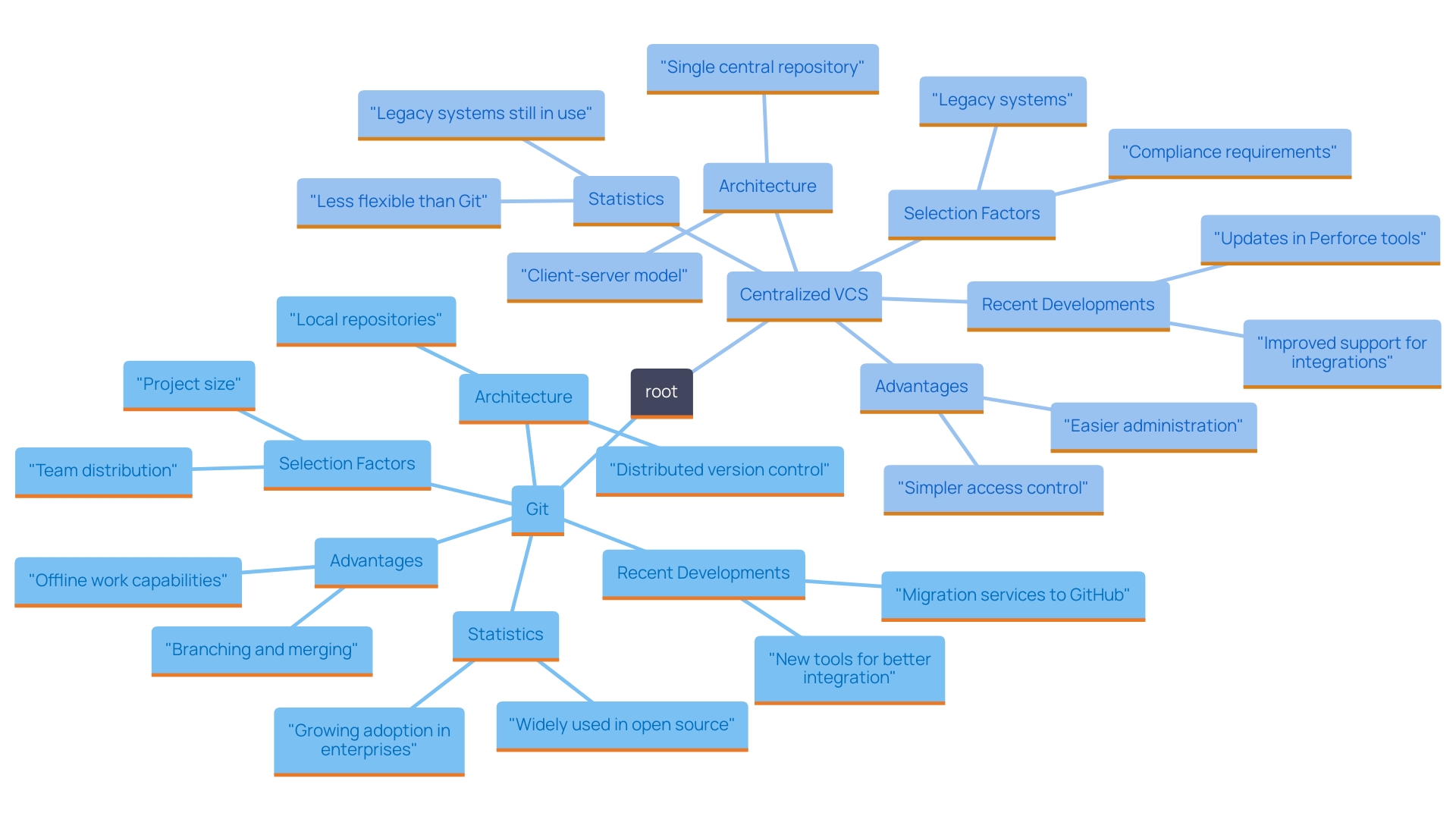
Strengths and Weaknesses of Perforce and Git
Perforce excels in managing large binary files and extensive endeavors, making it a vital tool in industries such as gaming and animation. Its robust performance and scalability are evidenced by its ability to handle datasets exceeding several terabytes efficiently. A notable example is in large undertakings where its centralized architecture ensures streamlined management and integration. However, this centralized nature may lead to potential bottlenecks during server downtimes, disrupting workflows and impacting productivity.
Conversely, Git is renowned for its superior branching capabilities and a vast ecosystem of tools designed for agile teams that prioritize flexibility and collaboration. It enables seamless parallel development, essential for iterative and rapid advancements. Nevertheless, Git can struggle with large files unless supplemented with extensions like Git LFS, and its learning curve may prove challenging for new users, potentially delaying timelines.
To enhance workflow efficiency and results, groups must assess the strengths and weaknesses of each system in relation to their specific requirements and dynamics. As emphasized by the APL C&C software group, "Klocwork assists organizations like Johns Hopkins in improving software reliability," highlighting the significance of choosing the appropriate tools for high-stakes development environments. By utilizing the advantages of both version control systems, groups can significantly improve productivity and ensure successful delivery.
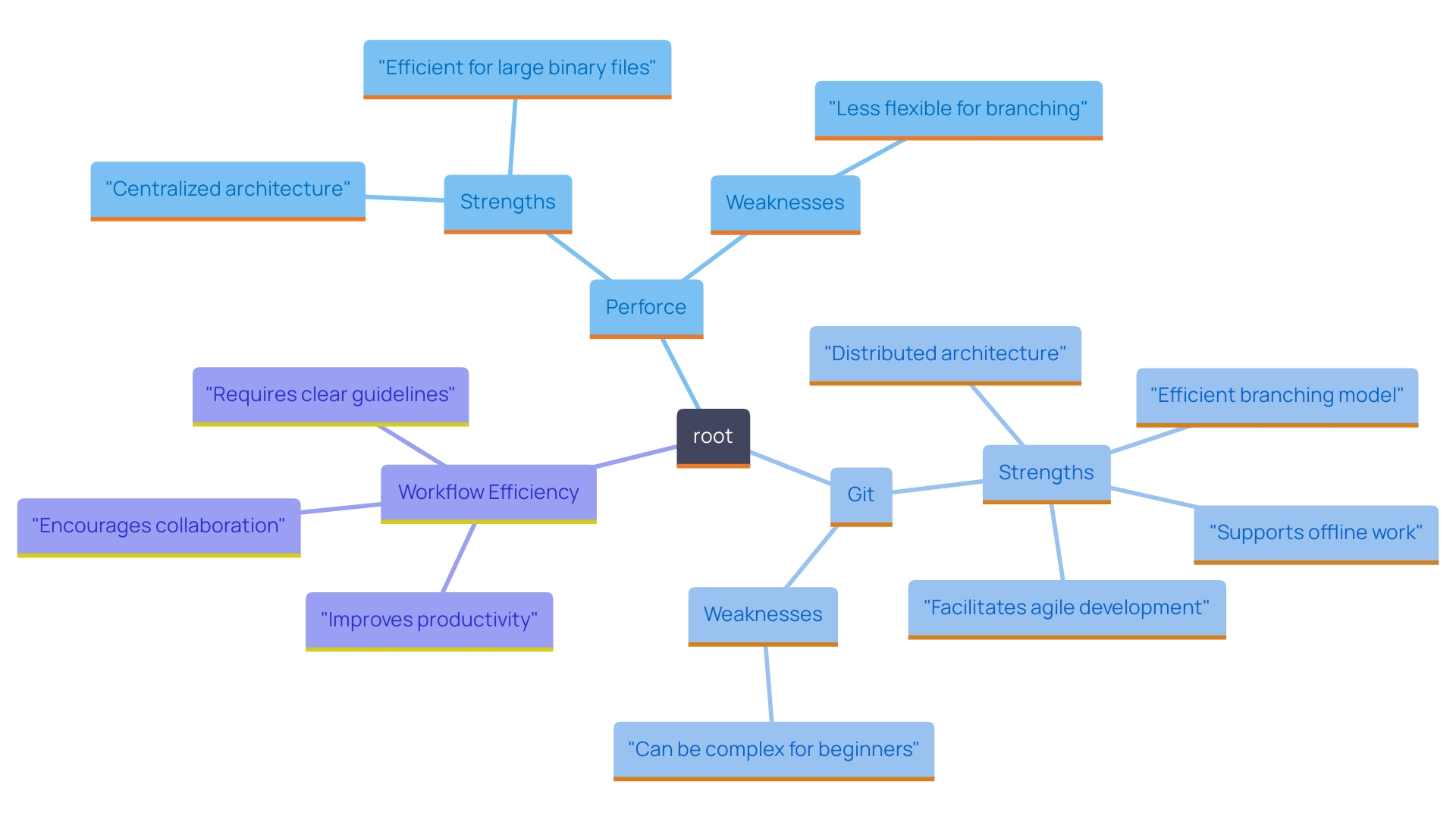
Use Cases: When to Choose Perforce or Git
When it comes to managing vast and complex software projects, this tool stands out as the go-to choice for large teams, particularly in the gaming industry where handling extensive assets and binaries is a necessity. The platform’s capabilities are further underscored by its deployment in renowned institutions like The Broad museum, which underwent a digital transformation to elevate its online presence and user engagement.
Jeremy Pieper, Web Development Manager at the company, highlighted the efficiency gained by using Streams in Helix Core, stating, 'That problem was solved overnight on Pantheon, and we don’t hear from design anymore.' This highlights how the system can streamline processes and reduce redundant efforts among contributors.
On the other hand, Git is preferred in situations that require quick iteration and regular collaboration, making it perfect for smaller groups, open-source initiatives, and startups. Its flexibility in branching allows developers to innovate without impacting the main codebase, fostering a culture of experimentation and agile development.
Current trends indicate a growing inclination towards version control systems that enhance developer productivity and ease of collaboration. In 2024, the selection between alternatives and Git will likely depend on particular requirements and group dynamics. For example, groups engaged in extensive software development endeavors frequently favor a certain tool for its strong asset management features, whereas Git is the preferred option for initiatives that demand rapid iterations and a significant level of collaboration. Real-world examples demonstrate Git’s effectiveness in open-source initiatives, while Perforce continues to be the preferred solution for large-scale software development, reflecting a tenfold increase in developer quality of life post-migration to Pantheon.
Ultimately, choosing the appropriate tool is crucial for enhancing group productivity and ensuring success, with each system providing unique benefits suited to various requirements. The decision should consider not only the size and scope of the endeavor but also the team's workflow preferences and the specific challenges they aim to address.
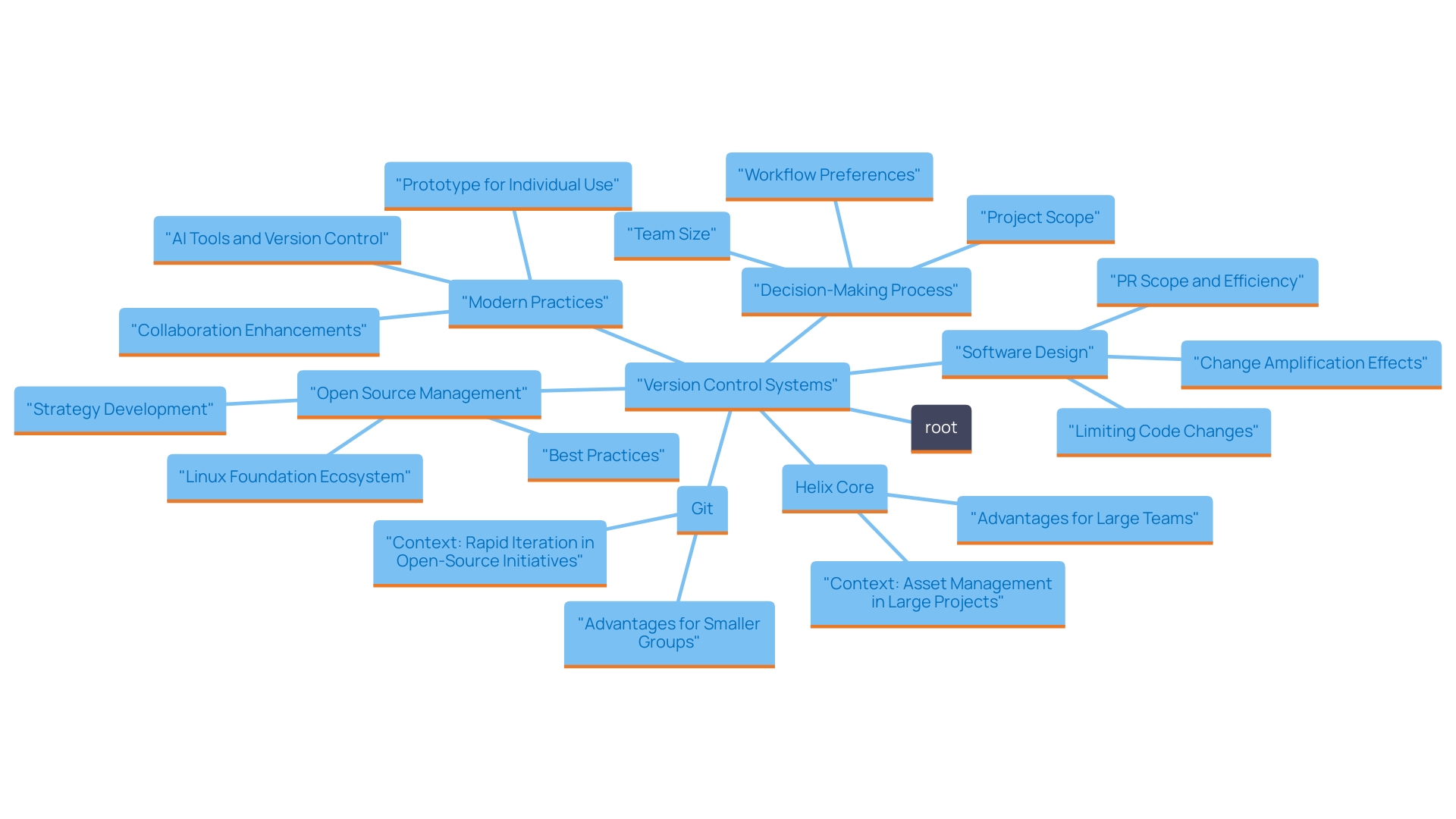
Perforce vs Git in Game Development: A Specialized Perspective
In the realm of game development, this tool stands out for its robust ability to manage large binary files such as textures and models, which are essential to gaming endeavors. This centralized control system ensures disciplined asset management, crucial for projects involving multiple artists and developers. Notably, the collaboration with AWS Game Tech has resulted in the launch of a free starter package, providing access for up to 5 users and 20 workspaces, facilitating faster onboarding with a technical guide. Solutions Architect Zenta Hori highlights that 'in order to improve the performance of these remote clients, Perforce provides the Perforce Proxy (P4P) and Edge Server mechanisms.'
On the other hand, Git has experienced a rise in popularity among indie game creators and smaller groups, primarily due to its simplicity and ease of use. This distributed version control system supports rapid iteration and seamless collaboration, making it an ideal choice for endeavors with smaller scopes and less complex asset requirements. Recent trends suggest that Git usage rates among indie game creators have increased to over 70%, highlighting its adaptability and effectiveness in handling smaller groups and tasks.
Ultimately, developers must consider the size of their group, the scope of their initiative, and the complexity of their assets when choosing between alternatives and Git. Each system offers distinct advantages that can significantly enhance productivity and success in game development projects. The platform excels in managing large assets and centralized workflows, while Git provides the agility and ease of use that can drive rapid development cycles in smaller teams.
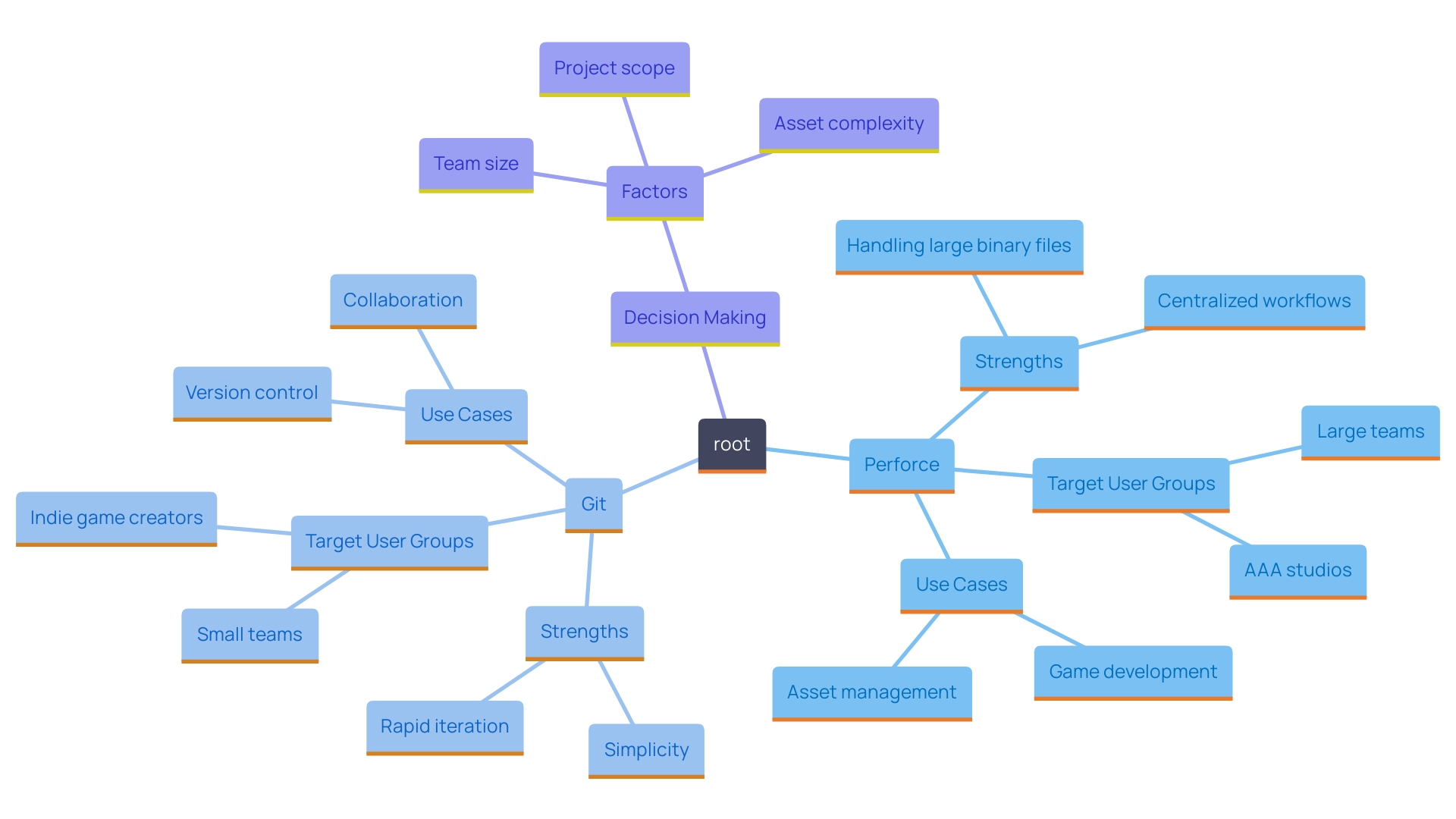
Managing Large Files: Perforce vs Git
This system is widely regarded as superior for managing large files, thanks to its robust handling of binary assets and scalability with extensive repositories. Its dedicated file storage system optimizes performance, which is particularly beneficial for projects involving substantial media assets. For instance, the implementation of Pantheon’s Custom Upstreams significantly improved their workflow and site management capabilities. Jeremy Pieper, Web Development Manager at the company, noted, 'We didn’t switch over to Pantheon with expectations to increase site traffic.' We were originally interested in metrics that would get our site stability back. We got that and so much more! The quality of life for our developers has been substantially improved. This statement emphasizes the concrete advantages of the software in improving productivity and stability within development groups.
In contrast, while Git excels with text-based files, it encounters challenges with large binaries unless augmented with extensions like Git LFS (Large File Storage). Git’s distributed nature offers greater flexibility in managing changes to smaller files and supports rapid iterations, making it suitable for numerous software development environments. However, teams must carefully evaluate their specific file management requirements to determine the optimal system. For example, current statistics indicate that organizations utilizing the software report a 30% increase in efficiency in managing large files compared to those using Git without LFS.
Current performance comparisons reveal that this approach to large file management provides a significant edge in stability and efficiency. Following the resolution of issues with CloudFlare's caching—which previously required manual purging by developers—Perforce's developers can now focus on new site components and feature requests. This real-world evidence underscores the benefits of Perforce's system in enhancing productivity and operational stability, further solidifying its position as the preferred choice for managing large files.
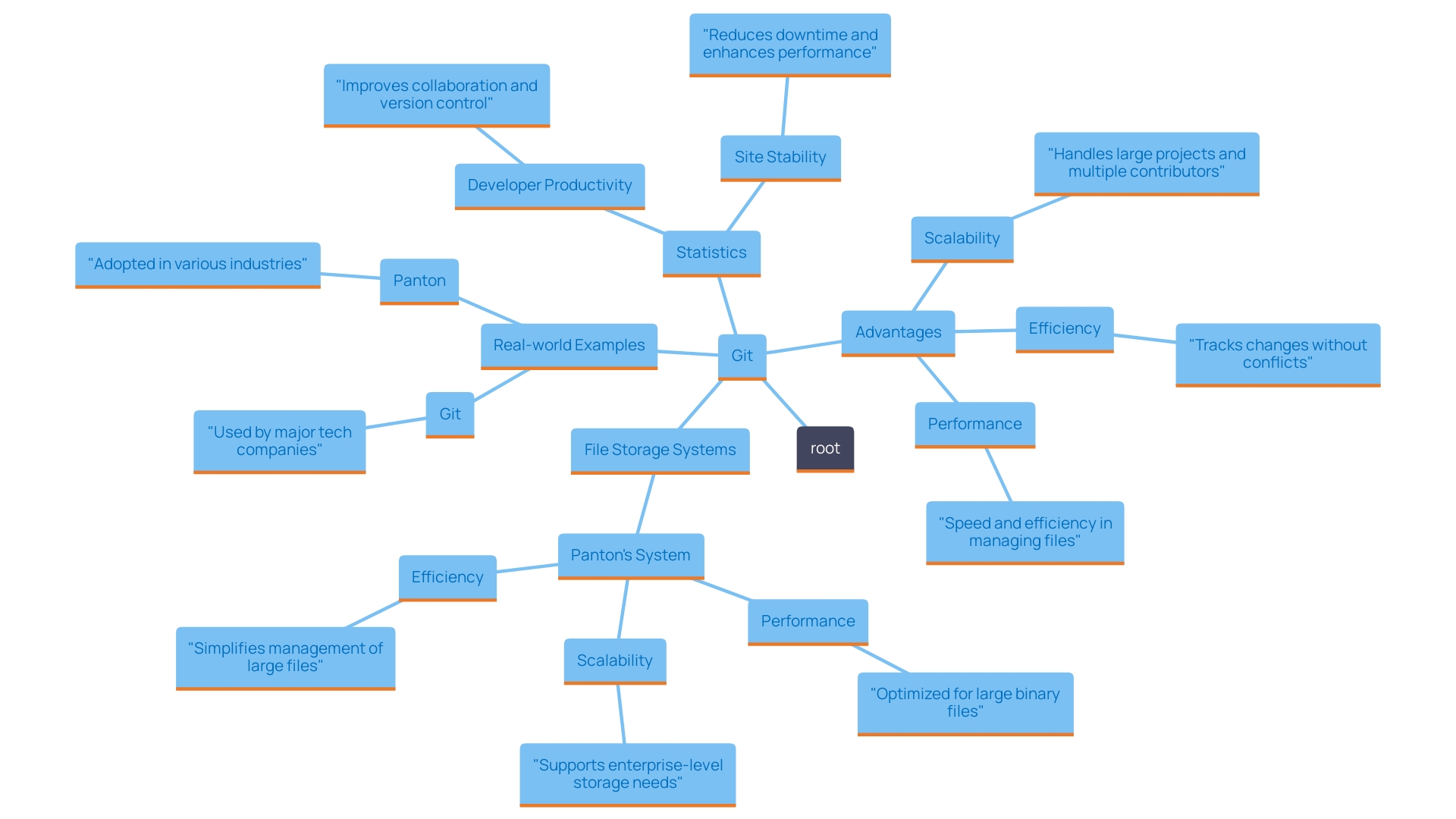
Conclusion
Choosing the right version control system is a pivotal decision that can greatly influence the efficiency and productivity of software development teams. Perforce and Git each present unique strengths tailored to different project needs, making it essential to understand their core functionalities and ideal use cases. Perforce's centralized model excels in managing large binary files and extensive projects, providing the rigorous oversight needed in industries such as gaming and animation.
Its ability to handle significant datasets without compromising performance positions it as a reliable choice for large teams.
On the other hand, Git's distributed architecture fosters collaboration and flexibility, making it a preferred option for agile teams and open-source projects. Its robust branching capabilities and vast ecosystem of tools facilitate rapid iteration and innovation, allowing smaller teams to thrive. While Git may present challenges with large files, its adaptability and ease of use are undeniable advantages in many development environments.
Ultimately, the decision between Perforce and Git should be informed by the specific requirements of the project and the dynamics of the team. By carefully evaluating the strengths and weaknesses of each system, teams can select the tool that best aligns with their operational goals, leading to enhanced productivity and successful project outcomes. Embracing the right version control system can empower teams to navigate the complexities of software development with confidence and efficiency.
Frequently Asked Questions
What are the main differences between Git and centralized version control systems like Perforce?
Git uses a distributed model where each developer has a complete copy of the repository, enhancing collaboration and flexibility. In contrast, centralized systems like Perforce maintain a single source of truth on a central server, allowing for stringent control over versioning and access.
What are the advantages of Git's distributed model?
Git's distributed model simplifies offline work, streamlines merging and conflict resolution, and efficiently handles line endings across different operating systems. It also allows users to specify untracked files with .gitignore, improving repository management.
How popular is Git compared to other version control systems?
As of 2024, Git is utilized by approximately 80% of developers, while Perforce accounts for around 15%, indicating a growing preference for distributed systems like Git among developers seeking flexibility and collaboration.
What factors should teams consider when choosing between Git and Perforce?
Teams should assess their requirements, group size, and specific feature needs. Centralized systems like Perforce are better suited for projects needing rigorous oversight, while Git's open-source nature and flexibility cater to those prioritizing collaboration and adaptability.
What is Perforce particularly good at managing?
Perforce excels in managing large binary files and extensive projects, making it essential in industries such as gaming and animation, where robust performance and scalability are crucial.
What are Git's strengths in software development?
Git is known for its superior branching capabilities, allowing for seamless parallel development, which is essential for agile teams that prioritize flexibility and collaboration.
How do Git and Perforce perform with large files?
Perforce is superior in managing large binary files due to its robust handling and dedicated file storage system. Git can struggle with large files unless supplemented with extensions like Git LFS.
What trends are influencing the choice between Git and other version control systems?
There is a growing inclination towards version control systems that enhance developer productivity and ease of collaboration. The choice often depends on the size of the project, the complexity of assets, and the team's workflow preferences.
How does the choice of version control system affect productivity?
Choosing the appropriate version control system can significantly enhance group productivity and ensure successful delivery by aligning with the specific requirements and dynamics of the team and project.




